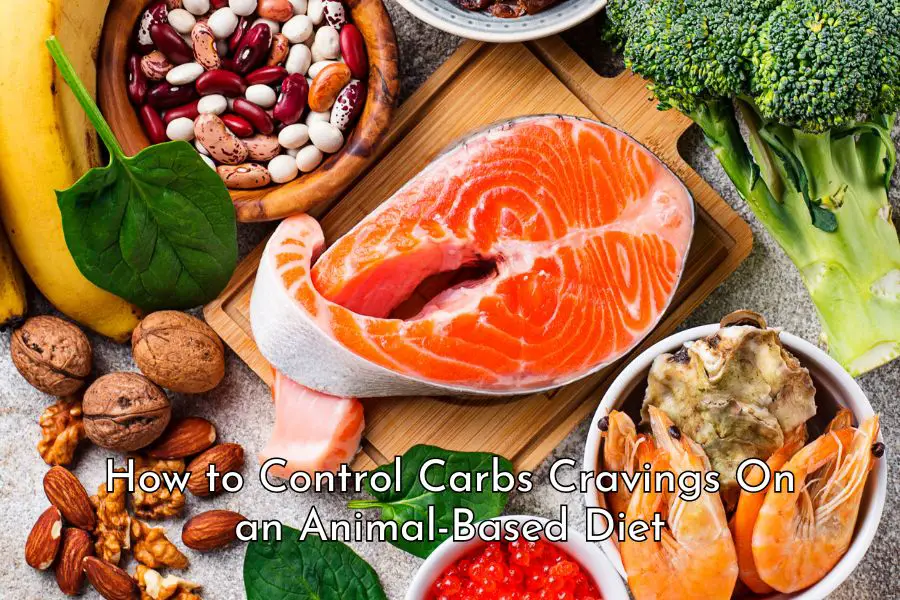Both protein and fat are vital for human life, but how much fat and protein should you eat? What is the optimal fat to protein ratio on the carnivore diet? Is this ratio the same for everyone? These are the questions we will explore in this post.
In this post, we will first look at the available evidence on the lower and upper limits of protein intake in humans. Based on this evidence, a safe range of fat to protein ratios can then be established. We will also look at how to find out your personal optimal fat to protein ratio.
The importance of getting the balance right
The word “protein” comes from the Greek word prōteios, meaning “primary” or “holding the first place”.
The name could not be more apt given the vital role protein plays in human and animal life.
Proteins form the major structural components of all the cells of the body. Proteins also function as enzymes, in membranes, as transport carriers, and as hormones. An adequate supply of dietary protein is essential to maintain cellular integrity and function, and for health and reproduction, whereas protein undernutrition can have many serious health implications.[1]
A common concern amongst people in the carnivore community is how to get enough fat on this diet, not how to get enough protein because it seems to be implicitly assumed that we would all get enough protein on this diet.
However, if you put too much emphasis on fat, you might not eat enough meat which provides you not only proteins but also many other essential nutrients.
While fat is an essential source of energy and helps your body absorb vitamins, it is definitely not as nutrient-dense as meat.
Therefore, it is important to get the balance right or to aim for the optimal fat to protein ratio on this diet.
As you will find out below, though vitally important, nobody knows exactly how much protein a human body needs.
What we have, however, are recommendations on daily intakes of protein to maintain nitrogen balance and upper tolerable limits.
Based on the range of the maintenance and upper tolerable limits, it is possible to work out the best fat to protein ratio for yourself.
Evidence on the lower and upper limits of protein intake in humans
1. Health authorities’ recommendations
(i) Institute of Medicine in the US
The Institute of Medicine does not set a tolerable upper intake level for protein but it sets the Recommended Dietary Allowance (RDA) and the Acceptable Macronutrient Distribution Range (AMDR) for protein as follows:[2]
| RDA | AMDR | |
|---|---|---|
| >18 years | 0.8g/kg/day | 10% – 35% of total energy intake |
The above RDA (gram of protein per kg of body weight per day) is set for average adults and aims to maintain nitrogen balance in the body. Obviously, protein needs for athletes, bodybuilders, and people who are physically active will need to be higher.
As to the Acceptable Macronutrient Distribution Range for proteins of 10% to 35%, the Institute of Medicine defines it as “the range of intakes of an energy source that is associated with a reduced risk of chronic disease, yet can provide adequate amounts of essential nutrients“.
The Institute of Medicine notes that the risk of adverse effects from excess protein intake from foods appears to be very low.
(ii) Department of Health in the UK
Below are the reference nutrient intakes for protein set by the Department of Health.[3]
| Men | Women | |
|---|---|---|
| 19-64 yr | 55.5 g/day | 45 g/day |
| > 65 yr | 53.3 g/day | 46.5 g/day |
The UK government sets different recommendations for men and women, probably assuming the difference in weight between genders. These recommendations also vary with age. The Institute of Medicine, meanwhile, sets the same RDA for both men and women 18 years and older.
However, it is difficult to understand why the UK government thinks that protein intake for men should decrease after the age of 65 but that for women should increase when they reach the same age.
Research has shown that there is an age-related decline in skeletal muscle protein synthesis rates in humans. Accordingly, as you get older, your protein intake should increase to compensate for this decline, not decrease.[4]
(iii) Australian and New Zealand health authorities
Recommended Dietary Intakes for protein for Australians and New Zealanders are jointly set by the two countries’ health authorities as follows:[5]
| Men | Women | |
|---|---|---|
| 19-70 yr | 64 g/day (0.84 g/kg) | 46 g/day (0.75 g/kg) |
| >70 yr | 81 g/day (1.07 g/kg) | 57 g/day (0.94 g/kg) |
The Australian and New Zealand Authorities seem to be of the view that protein needs increase with age and men need more protein than women.
They did not set the upper level of protein intake, however, recommend an upper level of 25% protein as energy.
They note that although some adverse effects have been reported with moderate to high levels of supplementation, the risk of adverse effects from foods consumed as part of everyday diets is very low.
2. Review of literature
Bilsborough and Mann (2006)[6] in their review of literature in relation to dietary protein intake in humans suggest a maximum protein intake of approximately 25% of energy requirement or at around 2g to 2.5g/kg/day.
Wu (2016)[7] reviews the available evidence to date and concludes that:
- Long-term consumption of protein at 2 g/kg/day is safe for healthy adults
- The tolerable upper limit is 3.5 g/kg/day for well-adapted subjects. This is more than 4 times the RDA set by the Institute of Medicine
- Long-term protein intake greater than 2 g/kg/day may result in digestive, renal, and vascular abnormalities and should be avoided.
3. Paleolithic Ketogenic Diet
The ICMNI in Hungary has been using the Paleolithic Ketogenic Diet to treat many chronic conditions since 2012.
The Paleolithic Ketogenic Diet is a high-fat animal-based diet with a fat-to-protein ratio of about 2:1 in weight. It has a continuum starting with 100% animal-based food and allowing for up to 30% plant food.
Patients with serious health problems like cancer and autoimmune conditions will be put on a full animal-based high-fat diet with just meat, fat, and organ meat.
Patients with less serious health problems (e.g. diabetes, overweight, hypothyroidism) will be allowed some plant food if desired.
The Paleolithic Ketogenic Diet’s 2:1 fat-to-protein ratio (in grams) means around 18% of calories from protein and 82% of calories from fat.
In my view, this is high-quality data and directly relevant to people on the carnivore diet because the ICMNI developed the Paleolithic Ketogenic Diet based on clinical data from thousands of their patients.
4. Vilhjalmur Stefansson experiment
Vilhjalmur Stefansson, an Arctic explorer and ethnologist was put on a one-year of meat-only diet as an experiment in 1928 at Bellevue Hospital.[8]
They first fed him a very high protein diet which accounted for 44% of his total calorie intake. On the third day of this lean meat diet, he developed nausea and diarrhea.
When the protein intake was reduced to around 20% and fat intake was increased to around 80%, nausea and diarrhea disappeared.
Both Stefansson and Anderson (the other participant of the experiment), on average, got 20% of calories from protein.
The meat used in the experiment included beef, Iamb, veal, pork, and chicken and the parts used were muscle, liver, kidney, brain, bone marrow, bacon, and fat.
Their typical daily menu was as follows:
- Breakfast: lean beef, 190 g; fat, 100 g
- Dinner: liver, 200 g; fat, 75 g
- Supper: lean beef, 200 g; marrow, 70 g.
5. The Eskimos
August and Marie Krogh (1908) estimated that the Greenland Eskimos consumed approximately 280 g of protein, 135 g of fat, and 54 g of carbohydrate. On this diet, the Eskimos would have gotten 44% of their energy from protein. An examination of 142 Eskimos at the time also found no evidence of elevated blood pressure and rarely any evidence of renal disease.[9]
Interestingly, Vilhjalmur Stefansson became unwell when they fed him this exact level of protein (44%) at the beginning of the experiment.
It is possible that Stefansson was put on the lean meat diet too quickly and his body did not have time to adjust, despite having previously spent about 5 years in total living with the Eskimos on meat and water only.
6. Views of medical doctors
Dr. Ted Naiman
Dr. Ted Naiman who is a proponent of a high protein diet suggests a protein to energy ratio (in grams) of about 1:1. This would translate into around 30% of calories from protein and 70% of calories from fat.
Naiman says he consumes about 200 grams of protein, 100 grams of fat, and 100 grams of carbohydrates a day, i.e. 38% of his total calories are from protein and 62% are from carbs and fat.
Dr. Paul Saladino
Dr. Paul Saladino in his book “The Carnivore Code“ mentions that the upper limit for protein intake seems to be about 40% of total calorie intake.
In addition, on his website, Dr. Saladino suggests that:
- If your goal is weight loss, aim for 1g of protein per pound of your goal body weight and then add high quality animal fat to this until satiety. This will usually end up being about 1:1 fat to protein ratio in terms of gram. This ratio translates to about 70% of calories from fat and 30% of calories from protein
- If your goal is athletic performance and you are already at your desired body composition, aim for 0.8 grams of protein and about 1.2 grams of fat per pound of lean body mass. The corresponding fat to protein ratio in terms of gram is 1.5:1 with 77% of calories from fat and 23% of calories from protein
- If your goal is weight gain, aim for 1 g to 1.2 g of protein per pound of lean body mass and create a caloric surplus with good sources of fat.
Dr. Shawn Baker
Dr. Shawn Baker says he eats mostly ribeye steaks. Ribeye steaks have about 30% calories from proteins and 70% calories from fat.
Dr. Kevin Stock
Dr. Kevin Stock says that many people including himself have consumed above 50% of energy from protein for relatively long periods of time without exhibiting these symptoms of “rabbit starvation”.
It’s worth noting that all four doctors mentioned above are physically active, lean, fit, engaging in bodybuilding exercises, and probably have very high muscle mass percentages.
6. Protein intake for active individuals
The International Society of Sports Nutrition in its Position Stand states that:[10]
- Vast research supports the contention that individuals engaged in regular exercise training require more dietary protein than sedentary individuals
- Protein intake of 1.4 – 2.0 g/kg/day for physically active individuals is not only safe but may improve the training adaptations to exercise training
- When part of a balanced, nutrient-dense diet, protein intakes at this level are not detrimental to kidney function or bone metabolism in healthy, active persons.
7. High protein intake in resistance-trained individuals
Resistance-trained individuals apparently can tolerate a much higher level of protein intake than the RDAs.
In a study by Antonio et al (2014), 40 healthy resistance-trained men and women who had been resistance training regularly for the last 9 years and an average of 8.5 hours per week were initially recruited.[11]
They were randomized to a control or high protein diet group. The high protein diet group consumed 4.4 g/kg/d of protein versus 1.8 g/kg/d in the control group.
Ten subjects dropped out and 30 fully participated in the study. Of the 10, three stated an inability to consume the protein needed for the study and one subject complained of gastrointestinal distress. Six did not provide a reason.
The high protein group in this study consumed 5.5 times the RDA for protein but no ill effects were reported.
The authors found that there was no change in overall body composition due to the high protein diet and that consuming a hypercaloric high protein diet did not result in an increase in body fat.
The safe range of fat to protein ratio on the carnivore diet
As can be seen from the evidence presented above, there are three ways in which protein intakes can be measured: (i) intake relative to body weight (g/kg/day), (ii) absolute intake (g/d), and (iii) intake as a percentage of total energy.
In the summary of evidence below, I will focus on the first and the third measures because most evidence is reported in those measures.
Lower and upper limits of protein intake relative to body weight (g/kg/day)
The lower limit of protein intake to maintain nitrogen balance in the body for the average adult is 0.8 g to 1 g/kg/day.
The general upper tolerable limit of protein intake is 2 g to 2.5 g/kg/day.
However, healthy well-adapted adults can tolerate 3.5 g – 4.4 g/kg/day without side effects.
Lower and upper limits of protein intake as a percentage of total energy
The lower end of protein intake recommended by the Institute of Medicine is 10% of total energy.
The upper limit of protein intake is 44% of total energy (the Greenland Eskimos).
While it is possible for well-adapted people or bodybuilders to consume up to 50% of calories from protein and feel perfectly fine, there is no study on the long-term effect of such a high level of protein intake.
Therefore, protein intake can be from 10% to 44% of total energy and fat intake can be from 56% to 90% of total energy.
This is a very wide range but it is understandable.
If you are not physically active and your nutritional status is good, your protein need may be at the lower end.
If you are a bodybuilder, have a physically demanding job, or are overweight but malnourished, you may need a higher protein intake.
In the section below, we will look at how you can tweak your diet and find the best fat to protein ratio for yourself.
How to find out the optimal fat to protein ratio for you?
The optimal fat to protein ratio for you at any point in time will depend on a number of factors:
- Your nutritional status. If you come from the standard American diet or a typical Western-style diet, you might be overweight or obese, under-muscled and malnourished, you should eat more meat and/or organ meat which is more nutrient-dense than fat. This will give your body the nutrients it needs to heal, support weight loss, and maintain muscle mass
- Your health. If you have health problems that need fixing, you need more nutrient-dense food. As a you can see from above, the ICMNI recommends a fat-to-protein ratio of about 2:1 in weight which translates to about 18% calories from protein and 82% calories from fat. However, they also recommend regular intake of organ meat such as liver, brain and marrow
- Your body composition goal. If you want to increase muscle mass, in addition to an approporiate exercise program, you may need higher protein intake. If you want to lose weight and not muscle mass, you may need higher protein intake
- The length of time you’ve been on the carnivore diet. You may inititally need more protein (meat and organ meat) to boost your nutritional status, but after you’ve been on the diet for a while, you may feel better on more fat and less protein
- What you eat. If you eat nose to tail and incorporate organ meat regularly in your diet, you may not need to eat a lot of protein. In the meat experiment, Vilhjalmur Stefansson got about 20% of calories from protein and 80% from fat, but he ate organ meat regularly. His typical daily meal was recorded as including liver and bone marrow.
To find out what the best fat to protein ratio for yourself is, I suggest starting with the middle range of the above tolerable range which is about 70% fat and 30% protein in terms of calories. In terms of weight, this is approximately 1:1 ratio.
Ground beef and ribeye steaks will give you this approximate ratio. If you eat average cuts of meat, add a little bit of fat or butter and you shouldn’t have any problem reaching this ratio.
Stay with this mid ratio for a while and observe how you feel before considering tweaking it.
If you don’t feel well on this ratio, often feel hungry, tired, low on energy, consider increasing fat intake and replacing some muscle meat with organ meat.
If you feel you are doing well with this ratio, consider the above factors and see if you want to increase your protein intake. For example, if you’ve gone through the adaptation phase and are now focusing on improving body composition, you might need to increase protein intake as your exercise routine changes.
Conclusion
Most people in the carnivore community seem to go with the mid-range of 20% to 30% calories from protein, and 70% to 80% from fat. But some can do fine with a higher high protein intake. The Greenland Eskimos is an example that shows this can be safe too.
My main goal in writing this post is to give you the information so that if you end up at either end of the fat-to-protein ratios, you don’t need to panic. You might have the perfect reasons to be where you are.
This lengthy post may make it sound very complex but in practice, you’ll find that it is very simple.
You shouldn’t have to count macros on the carnivore diet.
Eat the meat you enjoy and can afford and listen to your body’s signals.
If you feel better with more fat, go to your local butcher, ask for some beef fat and add a couple of slices to your steaks.
If you feel better with leaner meat and it helps you control your weight, stay with average meat cuts.
Embrace fat but definitely don’t fear protein on the carnivore diet.
If you find this post helpful, please consider sharing this post with your family, friends, and followers, that would be much appreciated.
Please also check out my library of articles on the carnivore diet here which is updated regularly.
Disclaimer: The information in this post is for reference purposes only and not intended to constitute or replace professional medical advice. Please consult a qualified medical professional before making any changes to your diet or lifestyle.
Photo credit: Jason Leung on Unsplash





